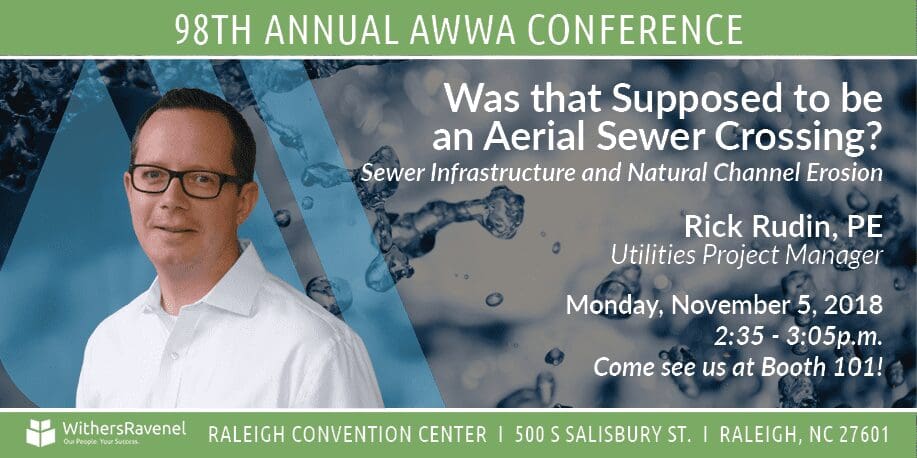
When sewer pipes are designed, it is a standard design parameter to place them at the minimum depth necessary to protect the pipes, and it is typically assumed that the existing ground will not change in the future. Many sewers are placed in the low-lying areas near creeks or stream. As a result, gravity sewer utility practitioners have observed situations where natural channel erosion has exposed sewer lines or threatens to undermine manholes; often there were no obvious signs that this erosion would eventually occur at the time the sewer was designed and constructed. Rick Rudin, PE will explain how understanding fluvial geomorphology can help utilities practitioners better predict when and where different kinds of natural channel erosion may occur and threaten sewer infrastructure.
Rick Rudin, PE is a Utilities Project Manager who specializes the design, construction, and rehabilitation of sanitary sewer mains, pump stations, and control valves. He has also worked on multiple large-scale transmission pipelines from preliminary design through construction, which has exposed him to the challenges and potential solutions to natural channel erosion in sewer design.
This preview is part of our AWWA Speaker Preview series, which highlights the WithersRavenel staff invited to speak at the 2018 NC AWWA-WEA Annual Conference. For more previews, follow along during the week of October 29 through November 2, or click here to see all of the posts in the series.
